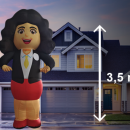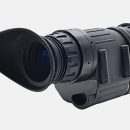Parabolic Springs vs. Conventional Springs: Which Is Best for Your Trailer?

Introduction
Trailer suspension springs influence ride comfort, load distribution, and maintenance needs. Conventional multi-leaf springs and modern parabolic springs each have strengths and trade-offs. This guide compares both spring types to help you select the ideal suspension for your application and explains how Wondee Autoparts’ spring series supports every requirement.
Conventional Leaf Springs: The Classic Workhorse
- Design: Multiple stacked leaves of uniform thickness create a spring pack.
- Load Capacity: High initial stiffness and load support, suitable for heavy loads.
- Maintenance: Interleaf friction requires lubrication and leads to noise and wear.
- Cost: Generally lower upfront cost and easier field repair by replacing individual leaves.
Parabolic Springs: The Comfort Innovator
- Design: Leaves taper in thickness toward the ends, reducing interleaf contact.
- Ride Quality: Lower interleaf friction yields smoother ride and reduced driver fatigue.
- Weight Savings: Fewer leaves and thinner material reduce unsprung weight by up to 20%.
- Maintenance: Less frequent lubrication needed, though replacement requires full pack swap.
Wondee Autoparts supplies both conventional and parabolic springs in various ratings, from pickup springs to heavy semi-trailer packs, crafted from high-strength silicon-manganese alloys.
Performance and Durability Comparison
| Feature | Conventional Springs | Parabolic Springs | | Load Response | Progressive stiffness but higher shock transmission | Softer initial response, improved damping | | Maintenance Frequency | Monthly lubrication, leaf replacements individually | Semiannual lubrication, full pack replacements | | Noise and Vibration | Higher noise due to leaf friction | Quieter operation and reduced vibration | | Cost Over Lifecycle | Lower initial cost, higher long-term parts cost | Higher initial cost, lower maintenance cost |
Analyze your route profiles and cargo sensitivity to choose the best option.
Installation and Compatibility
Parabolic and conventional springs require matching shackles, hangers, and U-bolts. When upgrading, source complete mounting kits from Wondee Autoparts to ensure proper geometry and alignment.
Conclusion
While conventional leaf springs excel in heavy-duty load support and cost-effective repairs, parabolic springs deliver superior ride comfort and lower maintenance. By evaluating operational priorities and leveraging Wondee Autoparts’ full spring and mounting hardware lineup, you can optimize suspension performance and fleet uptime.
Leave a reply
You must be logged in to post a comment.














